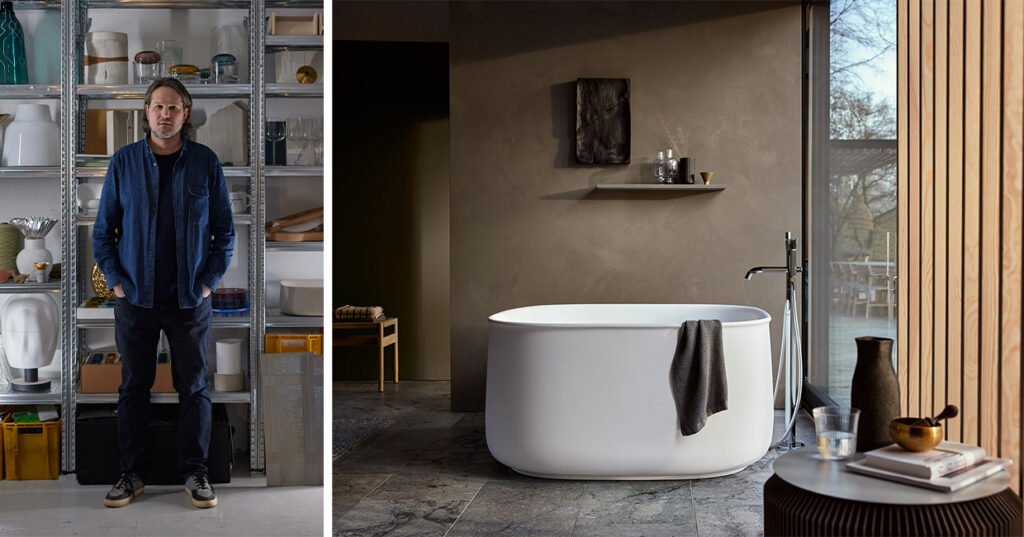Sebastian Herkner has recently launched the Zencha series, his first every collaboration with Duravit. Sebastian has always been interested in traditional artisanal trades such as glass-blowing, wood-carving, and basket-weaving – and he combines them with new technologies and contemporary design. “I love going on voyages of discovery and immersing myself in the everyday life of foreign countries,” said the designer.
Born in Bad Mergentheim in 1981, he studied product design at the University of Art and Design in Offenbach, at which point he started to focus on designing furniture and objects. On completing his studies, Herkner decided to go it alone by opening his own studio in Offenbach in 2007 and now employs five staff. Herkner’s rapid rise is not least a result of his pronounced instinct for colours, materials, and textures. His designs always have a certain twist – whether artfully woven outdoor furniture, mouth-blown side tables, or handwoven carpets.
For Duravit, the versatile designer created the harmonious Zencha bathroom range – sanitary objects with a rounded shape and a graceful, outward-curving edge along with minimalistic storage furniture with a subtle frame inspired by Japanese bathing and tea culture.
Attention to detail and the desire to imbue the products with additional value are some key facets of your work. How did you apply this approach to the development of the Zencha collection?
“The Zencha series once again highlights our understanding of authentic materials and the desire to evoke emotions. Inspired by the tea ceremony along with inner reflection and slowing things down, the low-key design, available in three color worlds, focuses on details such as the delicate, curved washbasin edge. This was inspired in turn by delicate teacups that nestle in the hand. For us it was important to engender an ambience in the bathroom where we can recharge our batteries in the morning and enjoy some ‘me time’ in the evening.”
You talk about ‘authentic materials’. What impact do these have with Zencha?
“For me it’s important to use authentic materials like wood, ceramic, and glass. With this design we also use a textured glass that plays with light and shade, with reflections. I believe that this authenticity is part of the harmony of this bathroom as an overall creation. And I think everyone can interpret Zencha for themselves. As the designer I provide the stage, but everyone chooses how to dance on it themselves.”
How did the design process of the new collection progress?
“We started discussions with Duravit a good three years ago and very quickly agreed on the story we wanted to tell. Working closely with the Hornberg plant for ceramic and Schenkenzell for furniture, we developed the entire collection consisting of washbasins, bathtubs, mirrors, and furniture. This was the first time we had developed a bathroom ceramic series and relied to a large extent on the vast knowledge, willingness, and openness of the employees. It was important for us to project the delicate elegance of the gentle, outwardly curving washbasin edge on to the furniture. The gentle frames of the storage furniture are once again testament to Duravit’s technical excellence.”
How important is it to you to make full use of the (design) freedom that you have as a designer in your projects?
“As a designer it’s a privilege for a company to give you the freedom and trust to develop a new vision and language for them. Zencha is my interpretation of Duravit and shows how I want a bathroom to be. However, ultimately such a development involves cooperation from both sides.”
In our fast-paced world, the bathroom is also a place of reflection and calm: how do you think this is changing the design of this room in the home?
“In our apartments or houses we have places of communication, such as the kitchen or bathroom, and this also extends to the bedroom, which nowadays is also sometimes used for working. I find that the bathroom is the last place that is limited to its original function: reflection, relaxation, and spending some occasional time alone.”



